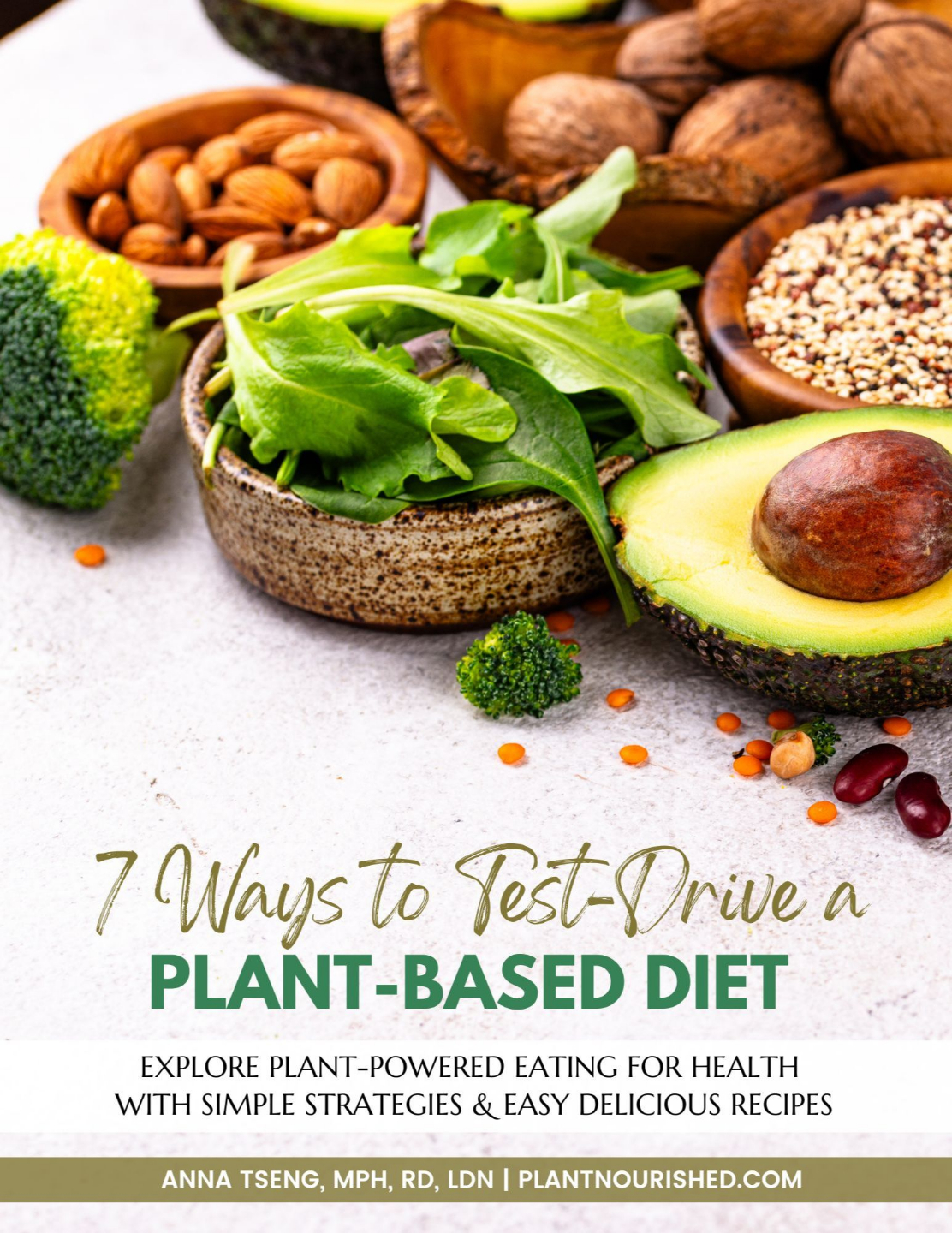How To Get Started With Whole Grains
Apr 23, 2023
You may have heard that a whole food plant-based diet is one that centers around unprocessed or minimally processed whole plant-based foods such as whole grains, fruits, vegetables, legumes, nuts, seeds, and mushrooms. But how exactly does one get started with whole grains? This article suggests some easy starter whole grains and practical ways to start adding them to your meals today.
What Are Whole Grains?
First, what exactly are whole grains? In a nutshell, whole grains contain the whole grain kernel, with its 3 main parts - the bran, germ, and endosperm. This means that whole grains contain the most nutrients that grains can offer, because key nutrients like fiber, minerals, vitamins, essential fatty acids, phytochemical compounds and antioxidants are found in the bran and germ. Some examples of whole grains are wheat, barley, rye, spelt, quinoa, buckwheat, amaranth and millet.
In contrast, refined grains (like white rice and white flour) are the processed milled version containing only the endosperm, losing many nutrients. That’s why for the best health, aim to eat minimally processed intact whole grains as much as possible.
Stock Your Kitchen With These Whole Grain Items
Now that you know what whole grains are, let’s talk about 5 useful whole grain items to stock your kitchen with, so you can get moving forward eating plant-powered!

✔️ 100% Whole Wheat Bread: Instead of white breads, choose 100% whole wheat or 100% whole grain versions. Pick denser loaves that contain a high fiber per serving content (aim for at least 3-5 grams fiber per slice). If the bread ingredients include sprouted grains or legumes, that is a bonus! Gluten-free whole grain bread options would include those made using millet, quinoa, oats, sorghum, rice or buckwheat.
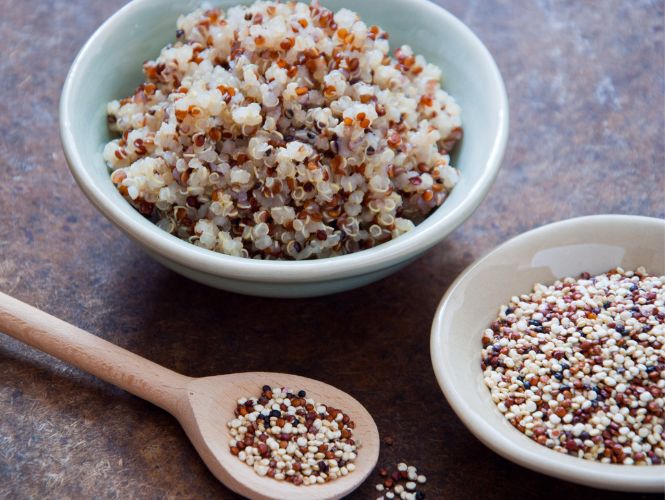
✔️ Quinoa: this is a naturally gluten-free whole grain that’s easy to cook up and also freezes well. Quinoa is also very versatile. It can be paired with an entrée for a main meal, used in a wrap, added into salads, or even made into a breakfast porridge.
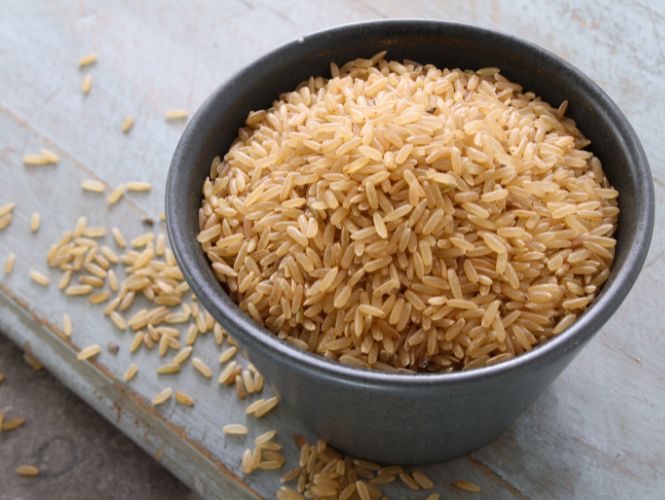
✔️ Brown rice: This is naturally gluten-free and can be part of an entrée or used in many dishes like casseroles, burritos and wraps.
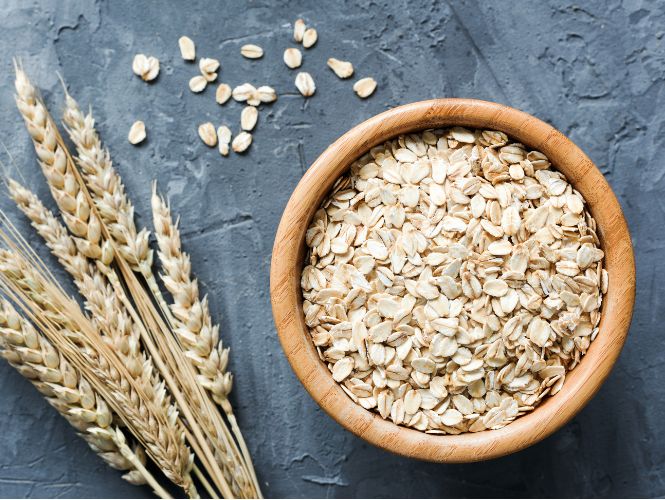
✔️ Oats: Where possible, choose oat groats, steel cut oats or large flake oats versions over the more processed quick cooking, 1-minute or ‘instant’ versions, as this will slow down the rate of digestion of the carbohydrates from oats. Although pure oats are gluten-free, it is best to choose oats that are certified gluten-free if you need to be sure they are not contaminated with gluten. That’s because oats are often processed in the same facilities that process wheat or other gluten-containing grains like rye and barley.
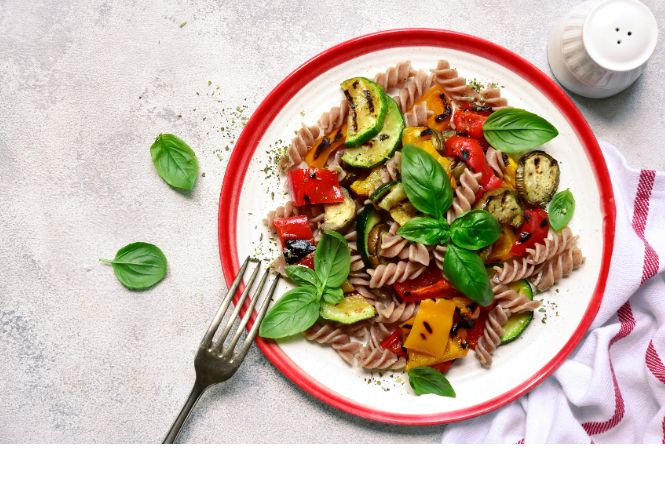 ✔️ Whole Grain Pastas: One easy switch you can make right away is this: if you are using white pastas, switch to using 100% whole wheat pasta or another 100% whole grain pasta instead. There are many different kinds of gluten-free whole grain pastas now available. These include pastas made from quinoa, brown rice, corn, oats, or a combination of these ingredients.
✔️ Whole Grain Pastas: One easy switch you can make right away is this: if you are using white pastas, switch to using 100% whole wheat pasta or another 100% whole grain pasta instead. There are many different kinds of gluten-free whole grain pastas now available. These include pastas made from quinoa, brown rice, corn, oats, or a combination of these ingredients.
Smart Ways to Start Adding in Whole Grains
I hope you now feel more comfortable including nutrient-rich whole grains regularly in your meals. For those who have previously severely restricted carbohydrates, and still feel a little anxious adding whole grains to meals, I recommend starting slowly and building up the portions eaten with meals gradually.
For instance, you can start by using 100% whole wheat or whole grain pasta when making pasta dishes. When cooking whole grains, you can also cook a smaller amount to begin with and enjoy just ¼ - ½ packed cup of a cooked whole grain with a meal as a starting point. Then, over time, you can gradually build this amount up so that you're having a ½ - 1 packed cup of cooked whole grain with your meal, depending on factors such as your stature, build and physical activity level.
A Final Note
Often when you are just starting out, it’s hard to know where to start and how to best begin. But know that just swapping out the white bread and white pasta you may be currently having to higher fiber, whole grain versions is a good starting point. These small actions are already improving your overall diet quality!

